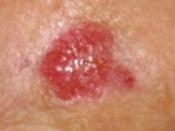One of the most popular trends of the 20th century is sun tanning. The summer is a time for hanging by the pool and beach catching some rays. Everywhere you look in magazines, in movies, on television shows, and in everyday life people are sporting the tanned look.
A tanned look was not always popular. In the 19th century it was uncommon for anyone of the upper class to have a tan. The paler you were the richer you seemed. People associated tans with labor workers who worked in the sun all day long. The French Royal court in the 1800's went the next step up and started to powder their faces to make themselves look even lighter. Not until the 1920's when the designer Coco Chanel came back with a dark tan, did it become the new trend.
Even though many people think they look better with a tan, they are not aware of the effects of the sun on your skin.
It?s not as harmless as many think. Your skin is the largest organ of your body, it's a protection. The sun contains UVA and UVB ultraviolet rays. UVB rays cause sunburns which burn the top layer of your skin. They are also linked to skin cancer. UVA rays go deeper into the lower layers of your skin, causing your skin to age. Ultraviolet rays also cause an increase production of melanocytes. Melanocytes make melanin which protect your skin from the skin. There are six different skin types. Each skin type has a different amount of melanin.The less melanin your skin has the more you'll burn.
When you tan it eventually fades away, but leaves long lasting effects on your skin. Some long term effects of sun tans are: wrinkles, leathery skin, brown age spots, and blotchiness.


